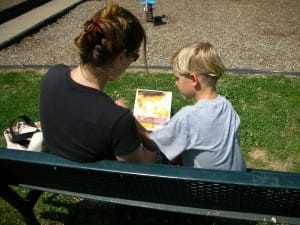Are you interrupting the purpose of Read-Alouds?
Posted by Brainspring on 23rd Jul 2015
My favorite part of being a teacher is getting to read a book aloud with a group of students gathered around. For me, it is so special to share reading for the enjoyment of reading, watching students engage with the story, connecting with the characters and anxious to hear what happens next. So many of students’ interactions with reading are focused on mechanics, such as decoding words and paying attention to sentence structure; read-alouds are a rare time when teachers and students can set aside the mechanics and immerse themselves in a book for the simple enjoyment of reading.
Read-Alouds are Effective without Extra Interruptions
Undoubtedly, teachable moments often present themselves during read-alouds, which can lead to discussions about vocabulary, grammar, story structure and concepts of print. However, as noted by a current article in Language Magazine, “A current fashion is to try to make read alouds do what they are not designed to do.” The current fashion is for teachers to constantly interrupt read-alouds to ask questions, point out details and provide explanations.
Purposeful instruction is not needed to make read-alouds effective. On their own read-alouds greatly contribute to reading development. The article lists that:
“• Hearing stories results in significant vocabulary development. Children gradually acquire the meanings of unfamiliar words when they hear them in stories.
• Hearing stories develops the ability to understand complex grammatical constructions.
• Hearing stories helps children develop a sense of how stories are constructed; they acquire a knowledge of “story grammars.”
• Hearing stories results in more knowledge of the world.”
Constant interruptions for instruction are not only unnecessary for students’ literacy development, they may be detrimental by disrupting students’ enjoyment of the stories. The article calculates that the trend to interrupt read-alouds can result in the story being interrupted as often as once every 4 seconds! These excessive interruptions may detract from students’ developing an appreciation for reading by making reading seem like a task, instead of something enjoyable. If part of our goal is to encourage students to read on their own, we must share the joy of reading with them, as well as teaching them the mechanics.
Do you think students respond better to a story when the teacher’s interruptions are seldom or more often? Comment below.
Remember to like us on FB, follow us on Twitter and LinkedIn and share us with your friends!
